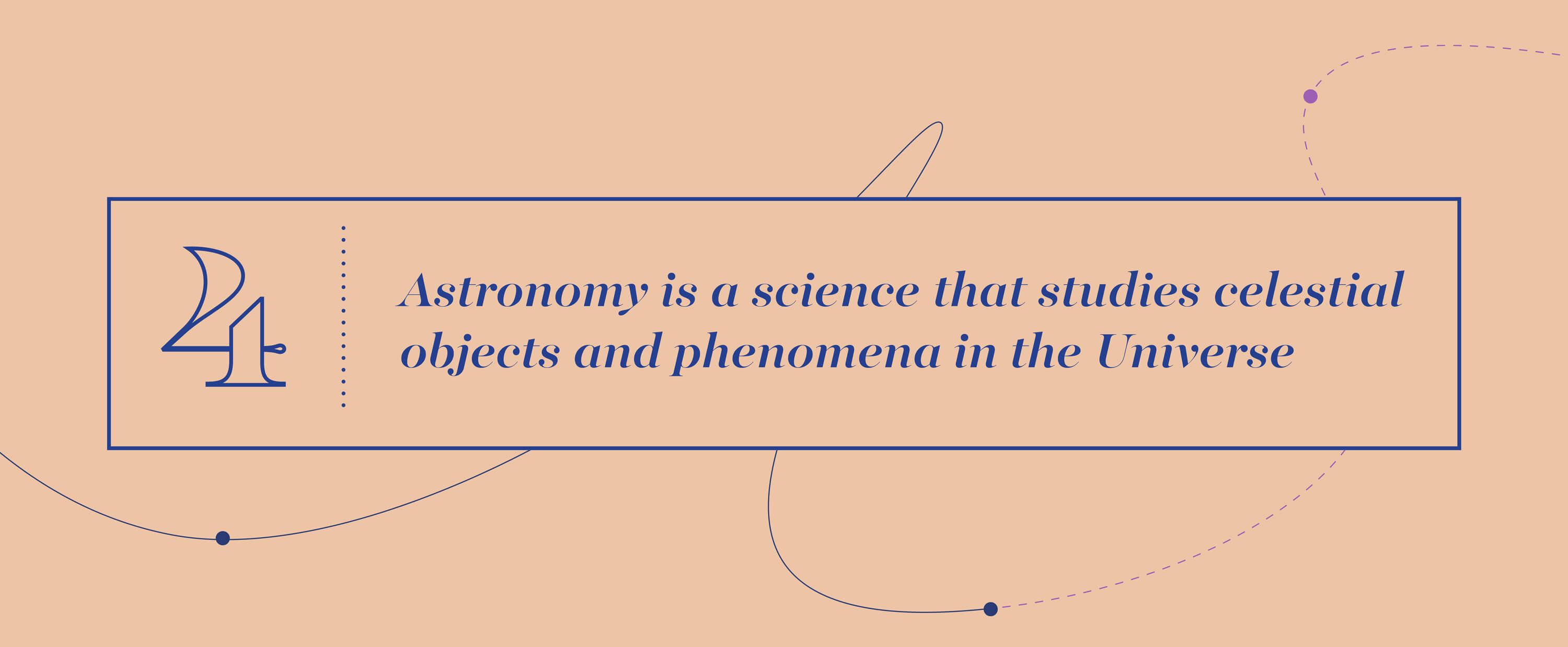
4.1
Light (otherwise known as electromagnetic radiation) is the main source of information for astronomical research
Since most celestial objects are too far away to travel to, we must rely on the electromagnetic radiation (light) of these objects to study them. Different wavelengths of the electromagnetic spectrum provide information about various mechanisms of astronomical phenomena and the nature of celestial objects. In modern astronomy, the study of the Universe is mainly conducted using the whole electromagnetic spectrum: radio, microwaves, infrared, visible, ultraviolet, X-rays and gamma-rays. Although in common parlance light only refers to visible light, in astronomy light can refer to the electromagnetic spectrum.
4.2
On large scales, gravitation is the dominant interaction in the Universe
On average, astronomical objects carry no net electric charge. The dominant way in which such objects interact over long distances is gravitation. Gravitation is what makes planets orbit the Sun, stars orbit galaxy centres, and keeps the hot plasma of stars together in spherical shape. Most astronomical phenomena can be described using Newton’s law of gravitation, but in the most extreme situations Einstein’s general theory of relativity is required to provide an accurate description.
4.3
Gravitational waves and subatomic particles provide new ways of studying the Universe
The existence of gravitational waves — ripples in spacetime — was predicted by the general theory of relativity in the early 20th century. Their first confirmed direct detection was achieved in 2015, and scientists can now use them as a new window to study the Universe. Gravitational waves are generated by strong gravitational interactions, such as the merger of two massive black holes or neutron stars. Astronomers also detect various kinds of subatomic particles, such as neutrinos, electrons or protons to learn about the interior of our Sun and some of the most energetic processes in the Cosmos.
4.4
Astronomy makes use of data obtained from observations and simulations to model astronomical phenomena in the framework of current theories
Astronomers create mathematical models of astronomical objects, their associated phenomena and their evolution. The framework of these models is given by the fundamental theories in physics and chemistry. Some models consist of elementary mathematical relations, more complex models make use of numerical simulations. The most sophisticated simulations are run on some of the largest supercomputers in the world. Observational data from telescopes and detectors is used to test and refine models. The interaction between observational evidence and models is an important aspect of discovery.
4.5
Astronomical research combines knowledge from different fields, such as physics, mathematics, chemistry, geology and biology
Professional astronomical research combines knowledge from mathematics, physics, chemistry, engineering, computer sciences, as well as other fields. This broad view has proven essential for revealing and modelling the nature of astronomical objects and phenomena. For example, to understand the nuclear reactions taking place inside stars, scientists need nuclear physics; in order to detect the resulting elements in the atmospheres of stars, they need chemistry. Engineering is essential for the manufacturing of telescopes and detectors, and the development of custom software is crucial for analysing the data provided by these instruments.
4.6
Astronomy is divided into a number of specialties
Since a good description of astronomical objects and phenomena requires a good knowledge of other scientific fields, modern astronomy is commonly divided in specialties according to the main topics addressed. Some of these specialties include: astrobiology, cosmology, observational astronomy, astrochemistry and planetary science. Astronomers may also pick a specialty of studying one particular kind of object, such as white dwarf stars. Given the important role that physics plays within astronomy, the terms “astrophysics” and “astronomy” are used interchangeably.
4.7
Time and distance scales in astronomy are a lot larger than the ones we use in our daily life
The Moon is the closest celestial object to Earth at a distance of about 384,400 kilometres. Our Sun has a diameter of 1.39 million kilometres, a mass of about 1989 thousand trillion trillion kilograms, and it is the closest star to Earth at a distance of about 150 million kilometres (which defines the Astronomical Unit, au). The star closest to the Sun is Proxima Centauri which is about 4.25 light-years away. One light-year is the distance that light travels (in a vacuum) in one year, which is just over 9 trillion kilometres. Our galaxy is 100,000-120,000 light-years in diameter and other galaxies can be as far as billions of light-years away. The units in astronomy are a lot larger than we could imagine. Astronomical time scales are long and ages of millions or billions of years are typical.
4.8
Spectroscopy is an important technique allowing us to probe the Universe from a distance
Several characteristics of astronomical objects can be revealed only by studying their spectrum — the rainbow-like decomposition of their light into myriads of different colours, each characterised by the light’s wavelength. By analysing the light collected from these objects, astronomers can determine details such as their elemental composition, temperature, pressure, magnetic field, among other characteristics.
